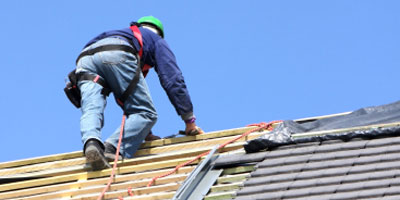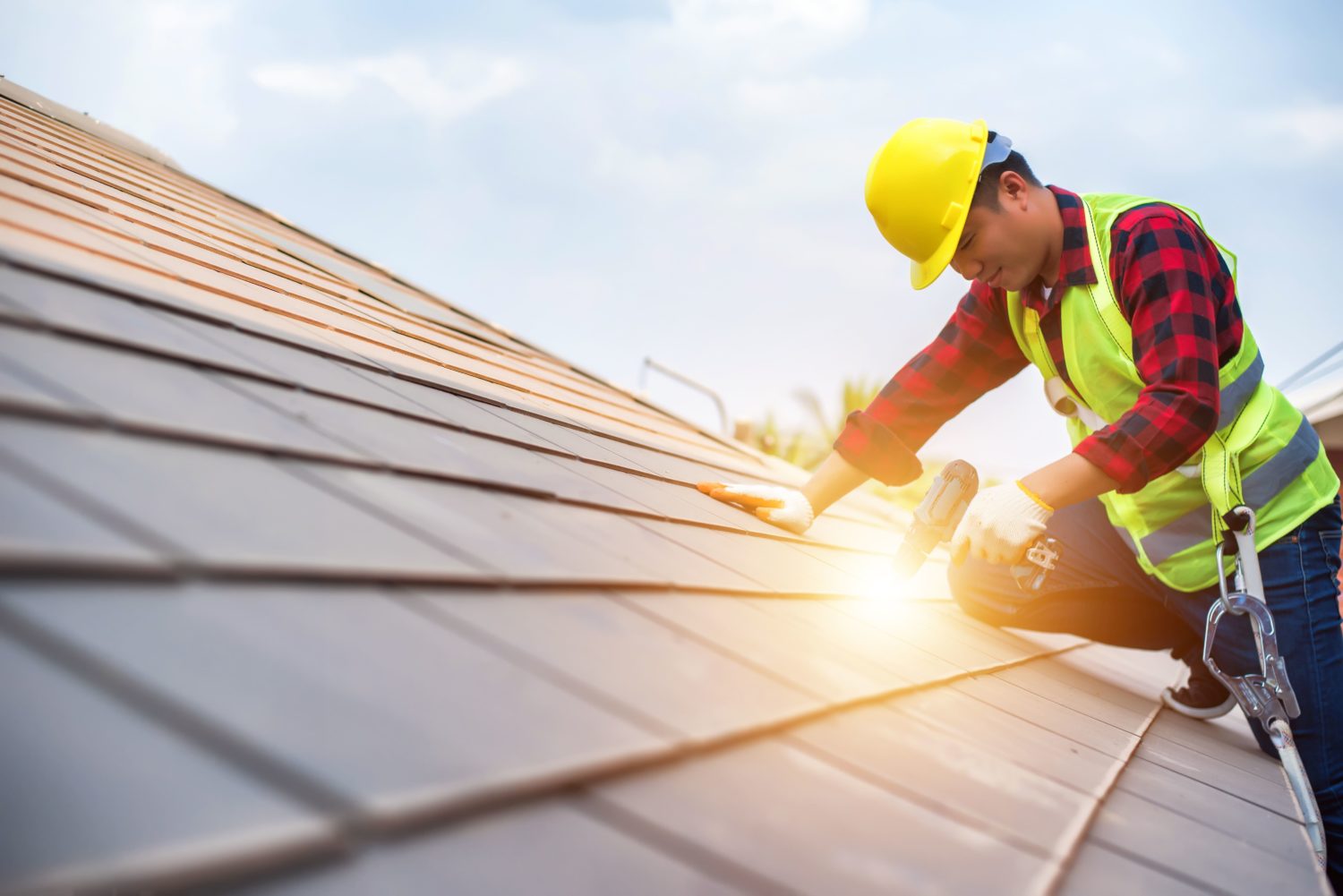5 Reasons a Roofing Company Near Me Might Recommend Energy-Efficient Upgrades
Exactly How Weather Can Influence Your Roof Covering Durability
Your roof deals with consistent challenges from the climate, and it's essential to recognize just how these conditions can reduce its lifespan. Each aspect plays a duty in your roof's durability, yet how can you properly prepare for these dangers?
The Effects of UV Rays on Roof Materials
Although you may not believe concerning it commonly, UV rays can greatly influence the life-span of your roof products. When your roofing system is exposed to sunlight, those unsafe rays can trigger significant damage in time. UV radiation breaks down the chemical bonds in materials like asphalt roof shingles, leading to breaking, fading, and damage. This destruction compromises your roof and makes it less effective at securing your home (Roof Replacement Novi).
You can reduce these impacts by selecting UV-resistant roofing products or applying protective layers. Regular assessments also aid capture very early signs of damage, allowing you to resolve issues prior to they intensify. Additionally, consider setting up reflective roof alternatives that can disperse UV rays and keep your home colder. By staying proactive concerning UV exposure, you'll extend the life of your roof covering and improve your home's general longevity. Taking these actions now can conserve you money and stress and anxiety later on.
How Too Much Rain Can Cause Roof Covering Damages
While UV rays can damage your roof, extreme rainfall presents one more substantial hazard to its integrity. When hefty rains happen, water can merge on your roof, bring about potential leakages and structural damage with time. If your roofing materials aren't created to handle extended exposure to wetness, they can weaken faster than expected.
Stopped up gutters can aggravate these problems, triggering water to overflow and seep right into your home. You may see spots on your wall surfaces or ceilings, indicating that water is locating its method inside. Furthermore, standing water can promote mold and mildew growth, which not only harms your roofing system but can also affect your interior air quality.
To safeguard your roof covering, validate your water drainage systems are clear and working effectively. Routine inspections can help you identify weak points prior to they develop into pricey fixings, maintaining your roof covering in excellent form even during hefty rainfall.
The Impact of Snow and Ice Accumulation
When snow and ice pile up on your roof covering, you could not recognize the tension it puts on the framework. That added weight can lead to major concerns like roofing drooping or perhaps collapse. And also, ice dam development can trap water, creating leakages and further damages to your home.
Snow Tons Tension
As winter season coverings your home in snow, the weight of collected ice and snow can put substantial tension on your roofing. You might not understand exactly how rapidly snow can build up, specifically throughout hefty storms, so it's crucial to keep an eye on the weight your roof covering is sustaining. Additionally, comprehending your roofing's framework and its snow lots ranking can inform you about when to take action.
Ice Dam Formation
Ice dam development can come to be a considerable problem during winter months, specifically when snow gathers on your roofing and temperatures fluctuate. When warmth gets away from your home, it melts the snow on your roof, causing water to flow down. You need to additionally regularly remove snow build-up from your roofing.
Temperature level Variations and Their Duty in Roofing Degeneration
Temperature variations can seriously influence your roof covering's life-span. As products increase and contract with cold and heat, they come to be more vulnerable to cracks and damage. Furthermore, freeze-thaw cycles can worsen these concerns, causing more deterioration gradually.
Thermal Growth Impacts
When temperatures change, your roof can go through substantial thermal expansion and contraction, which might bring about material anxiety and degeneration in time. As the sunlight warms your roof during the day, materials increase; when temperatures go down during the night, they acquire. This consistent cycle can develop weak places, particularly at joints and joints. You may see fractures, warping, or loosened shingles consequently. If left untreated, these concerns can lead to leaks and pricey repair work. To mitigate damage, consider using roofing materials created to hold up against these temperature level adjustments. Normal inspections can also help you capture very early indications of wear, guaranteeing your roof covering continues to be reliable and sturdy in safeguarding your home.
Freeze-Thaw Cycles
As wintertime collections in, the freeze-thaw cycles can ruin your roofing system. Moisture from rain or snow seeps right into fractures and gaps when temperature levels dip. As it ices up, it expands, placing immense pressure on your roofing materials. This cycle repeats as temperatures fluctuate, progressively causing deterioration. You may see roof shingles cracking, crinkling, or also disintegrating in time.
Disregarding these issues can result in even published here more considerable issues, including leakages and structural damage. To safeguard your roof, it's important to evaluate it consistently, particularly after severe climate. Attending to minor concerns promptly can aid prolong the life of your roof, ensuring it holds up against the harsh effects of freeze-thaw cycles throughout winter months.
Moisture Levels and Their Result on Roofing Honesty
While many individuals concentrate on temperature variations, humidity levels play a critical role in establishing the integrity of your roof covering. High humidity can produce a wet setting that urges mold, mold, and algae development, all of which can weaken roof covering products over time. If your roofing's ventilation isn't ample, moisture can obtain entraped, causing timber rot and other architectural concerns.
Conversely, reduced moisture can bring about completely dry problems, creating materials like shingles to come to be breakable and fracture. This brittleness can make them a lot more prone to damage from various other weather elements.
To maintain your roof's honesty, it is necessary to monitor humidity degrees and ensure appropriate air flow. Routine evaluations and upkeep can aid determine potential concerns before they come to be considerable issues. Maintaining your roof in good condition means being positive regarding moisture impacts, ultimately extending its lifespan and securing your home.
Wind Damage: A Silent Risk to Your Roof
Humidity isn't the only climate aspect to contemplate; wind damages can quietly intimidate your roof covering's honesty. Solid winds can lift roof shingles, loosen up blinking, and even tear off whole areas of your roof. You may not see these concerns quickly, yet gradually, they can bring about considerable leakages and architectural damage.
If you live in a location vulnerable to high winds, it is essential to maintain an eye on your roof covering after storms. Check for any missing out on or damaged shingles and inspect the edges where the roofing meets various other surface areas. Siding Contractor. Take notice of any debris that may have built up, as this can trap dampness and get worse damages
Neglecting these indications might conserve you time currently, however it might cost you a lot more in the future. A proactive method to wind damage can assist guarantee your roofing system remains safe and solid, lengthening its lifespan and safeguarding your home.
Preparing Your Roof for Extreme Weather Occasions
When preparing your roofing for severe climate events, it's essential to examine its present condition and make required upgrades. Beginning by checking for missing out on or harmed tiles, as these can cause leaks during hefty rainfall or snow. Change any kind of jeopardized materials to ensure a strong structure.
Next, examine the flashing around skylights, chimneys, and vents. Effectively sealed blinking protects against water from seeping in, which read review can cause substantial damages.
Think about enhancing your roof's framework, particularly if your location is vulnerable to high winds or heavy snowfall. Mounting impact-resistant tiles can add an additional layer of defense.
Ultimately, clear gutters and downspouts to advertise appropriate drainage. Stopped up seamless gutters can bring about ice dams or roofing system leaks. By taking these proactive actions, you'll assist expand your roof's life expectancy and decrease prospective damage during severe climate occasions.

Often Asked Questions
Just how Frequently Should I Check My Roof for Climate Damage?

Can I Fix Roofing System Damage Created by Climate Myself?
Yes, you can repair roofing damages brought on by weather condition yourself if you have the right devices and skills. Just make certain you focus on safety and security, analyze the damage thoroughly, and follow appropriate fixing methods to avoid future concerns.
What Roof Covering Materials Are Best for Extreme Climate?
For severe climate, take into consideration steel, slate, or impact-resistant tiles. These products stand up to heavy winds, hail, and snow far better than others. You'll assure your roofing system lasts longer, shielding your home from rough aspects properly.
Exactly How Does Climate Change Affect Roofing Longevity?
Environment modification accelerates use on your roofing, creating materials to deteriorate much faster. Boosted temperature levels and serious storms can cause even more regular repairs. You'll require to ponder sites durable alternatives to assure your roof covering lasts longer.
Should I Think About a Roofing Service Warranty for Weather-Related Issues?
Yes, you should most definitely take into consideration a roofing system guarantee for weather-related issues. It secures you versus unforeseen damages, guaranteeing your investment continues to be safe and secure. And also, it provides tranquility of mind during unforeseeable climate problems.
Just How Excessive Rainfall Can Lead to Roof Damage
When heavy rains take place, water can pool on your roofing, leading to potential leakages and architectural damage over time.Moisture isn't the only weather condition element to ponder; wind damages can calmly threaten your roof covering's integrity. By taking these aggressive steps, you'll assist expand your roofing system's life-span and minimize prospective damages during extreme weather condition occasions.
Can I Repair Roofing System Damages Created by Weather Myself?